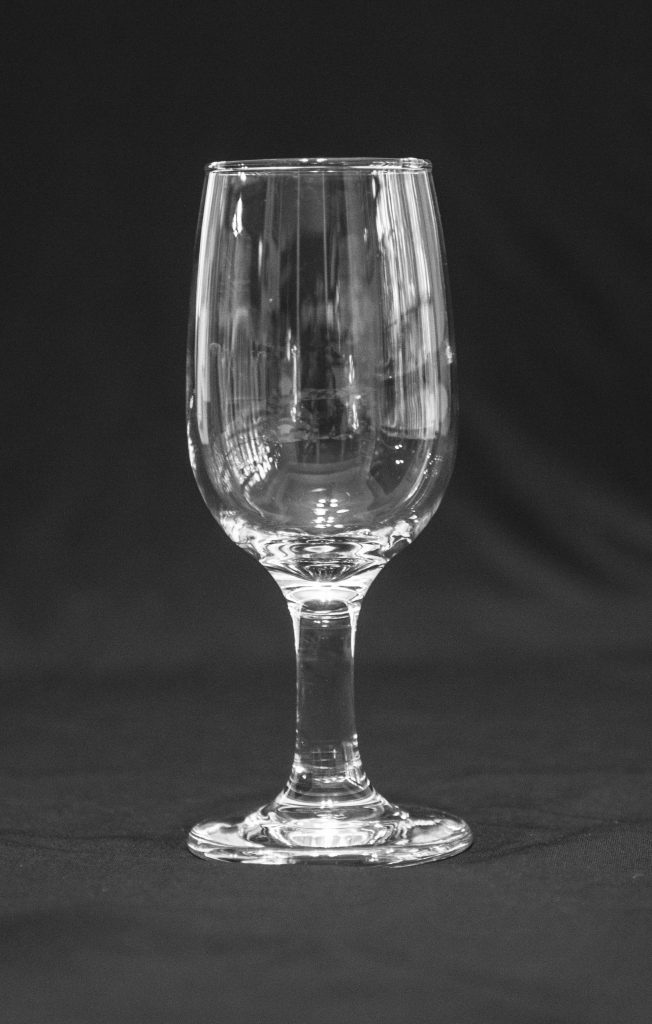Choosing Wine Glasses
Anatomy of a Wine Glass
- RIM: Top edge of the wine glass Bowl:
- BOWL: Wide cylindrical part of the glass
- STEM: Long slender leg of the glass
- FOOT Round flat bottom portion of the glass
Wine glasses are available in glass and plastic. Choose the material as it best fits your needs. Plastic may be a great idea for outdoors or with large gatherings while glass may be more appropriate for indoors and smaller gatherings. There are wine glasses without stems. There will always be a debate as to whether you should drink wine in a stemless glass as your hands will warm the bowls of a stemless glass. Many wine experts claim this will alter the taste and aroma of the wine as the temperature of the glass increases. Stems or stemless, the choice is entirely up to you. There are many different types of wine glasses. It is only necessary to have a white wine glass and a red wine glass. However, I would recommend having two types of glasses for Red (full and light body) and White/ Rose wines (full and light) and a single champagne glass. Dessert wine glasses are not a necessity but due to the intensity of dessert wines, you will want to pour smaller amounts which has a much nicer appearance in a smaller glass.
Wine Glass Types:

Sparkling Wines: Coupe: shallow, broad-bowled, saucer shaped stemmed glass Flute: a stem glass with either a tall tapered conical shape or elongated slender bowl, with a bead at the base which causes bubbles to gather quickly and rise to the top Tulip: a stem glass with a slim base that slightly opens to a wider bowl then narrows towards a slightly flared opening with a bead at base that makes bubbles rise, while the wideness allows room for flavor complexities to be revealed

Red Wines: A wide, round bowl is required for red wines. The wide bowl helps collect aromas. Over-sized or Bordeaux Glass: Tall with a broad bowl. Designed for full-bodied wine such as Cabernet Sauvignon and Syrah. The design’s purpose is to direct wine to the back of the mouth. Burgundy Glass: Shorter but with a broader bowl than the Bordeaux glass. The purpose of the broader bowl is to pick up the aromas of more delicate red wines such as Pinot Noir.

White/Rose Wines: The glasses have smaller bowls than the glasses for red wines. The smaller bowls help keep the wines cooler and positions your nose closer to the aromas. Full-Bodied White: These glasses should have a bowl smaller than a red wine glass but wider than a light-bodied white wine. A full-bodied Chardonnay is served in this type of glass. The Burgundy glass is an acceptable substitute for this glass. Light-bodied white: These glasses have a bowl narrower than a full-bodied white but wider than a Champagne flute. Wines such as Riesling, Gewurztraminer, and Sauvignon Blanc are served in this type of glass.

Dessert Wine Glasses: These glasses are smaller than standard wine glasses. These glasses help reveal and concentrate the aromas of sweeter and late harvest wines (Ice Wine). These glasses reveal the complex flavors of dessert wines such as ports, sauternes, and late harvest wines.
